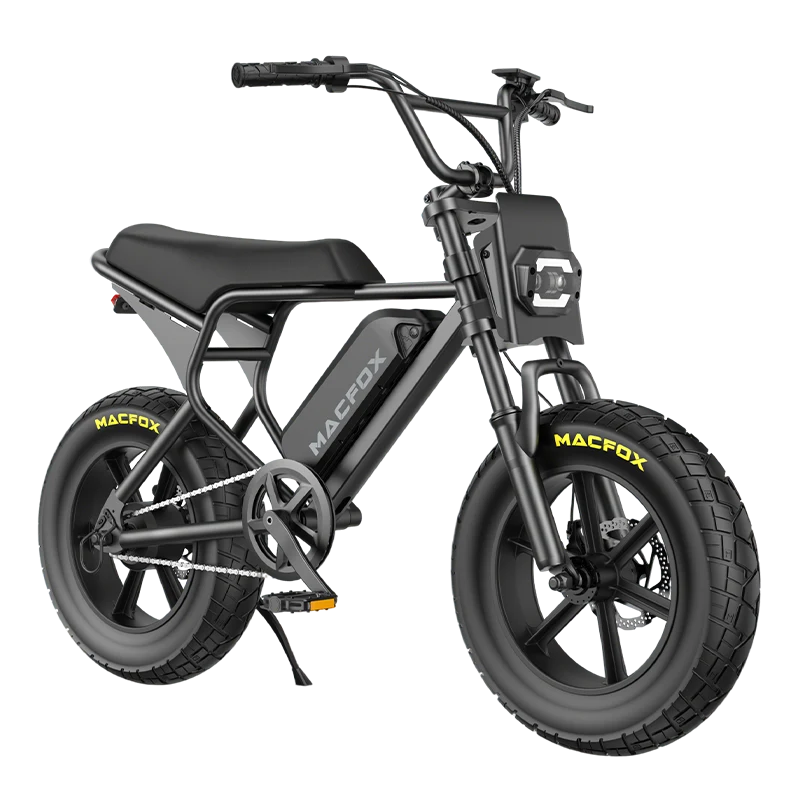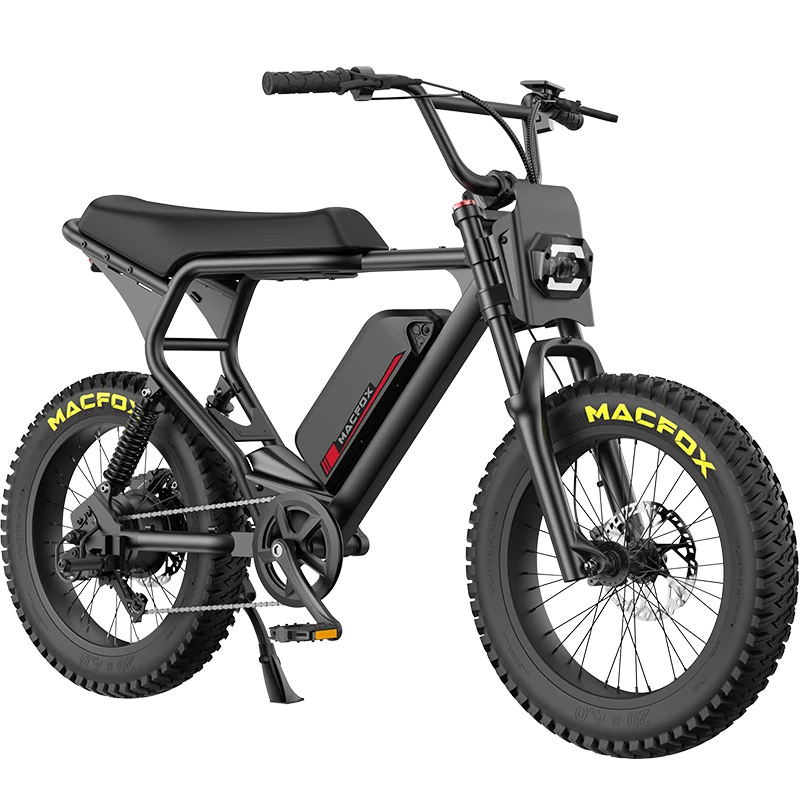Road signs are everywhere! While some may find them confusing, road signs are a cyclist’s best friend. Whether you’re on a bicycle or ebike, they keep you safe, guide you to the right path, and ensure that drivers understand your position on the road.
Whether you’re navigating busy city streets or navigating suburban bike boulevards, knowing what these signs mean is essential to enjoying your ride.
In this guide, we’ll break down all the key bike-related signs, laws, and even hand signals you need to know. Let’s hit the road!
The Basics of Traffic Signs

Before diving into bike-specific signs, let’s go over some universal rules of the road:
- Shape Matters: Circular signs often indicate prohibitions, while triangular signs warn of potential hazards.
- Color Clues: Red usually means stop or prohibited, yellow is a caution, green indicates permission or a route, and blue often marks exclusive or designated spaces.
Understanding these basics gives you the foundation to interpret more specific bike-related signs as you encounter them.
Bike Lane Classifications
Did you know not all bike lanes are created equal? The type of lane you’re riding in impacts your level of safety and comfort. Here’s a quick breakdown:
Class I
Think of these as the bike highways, completely separate from motor traffic. They’re perfect for a leisurely ride or a safe commute. Typically, these paths are wide enough for two-way bike traffic, and in high-use areas, you’ll find extra space for pedestrians too.
Class II
These are the bike lanes you’re most likely to see in the city. Marked by solid white lines, they run parallel to traffic. The good news? You’ve got a designated space. The not-so-good news? Cars are right next to you, so stay alert—especially for those dreaded opening car doors.
Class III
If you’ve ever seen a painted bike symbol with two arrows on the road, that’s a sharrow. It means you’re sharing the road with cars. There are no physical barriers, so it’s critical to “own the lane” and stay visible.
Class IV
These lanes are every cyclist’s dream: physically separated from cars, sometimes by curbs, planters, or even parked vehicles. They’re designed for maximum safety and comfort, especially in high-traffic urban areas.
Macfox X1S
$9,99.00 – $1,398.00Decoding Bike Lane Signs
Ever noticed those white bike symbols with solid or dashed lines? They’re telling you where you can ride and how to stay safe. Let’s break them down:
- Standard Bike Lane Signs: These indicate lanes for bikes only. Motorists can’t enter unless turning, and cyclists must ride in the same direction as traffic.
- Buffered Bike Lanes: You’ll find these on narrower streets. Dotted lines on the traffic side mean cars can merge if needed, but cyclists should stay alert for sudden stops or merges.
- Protected Bike Lanes: These lanes are set apart by physical barriers. Look for signs indicating their presence and take advantage of the extra protection.

Shared Lane Markings
Sharrows combine "shared" and "arrow" into one simple road symbol: a bike with chevrons above it. They remind both motorists and cyclists that the lane is shared. Here’s the key takeaway: don’t ride too close to parked cars, and make your intentions clear. Visibility is your best defense.

Green Bike Lanes
Green isn’t just for grass anymore! These brightly painted lanes highlight areas where bike and car traffic may overlap, such as intersections or turn lanes. They’re a visual cue for drivers to yield and for cyclists to stay alert.

Bike Boulevards
Think of bike boulevards as cycling sanctuaries. These roads are specifically designed for bikes, often with features like slow speed limits for cars and safe crossings at busy intersections. If you’re looking for a stress-free ride, seek out these boulevards.

Colored Bike Signs
Different colors mean different things, and understanding them can save you confusion—and potentially a ticket:
- Green: Recommended bike routes or shared spaces with cars.
- Yellow: A heads-up to motorists and cyclists to share the road.
- Blue: Exclusive bike areas, no cars allowed.
- Red: Strictly no bikes or vehicles.

Restriction Signs for Cyclists
Some areas are simply off-limits for bikes. Look out for:
- Red Circles with a Bike Symbol: No cycling allowed.
- “Do Not Enter” Signs: This applies to you, too—no shortcuts here!
- Pedestrian Zone Signs: If cars aren’t allowed but pedestrians are, you may be able to bike, but double-check the rules.

Hand Signals: Communicating on the Road
Signs aren’t the only way to communicate. Your hand gestures play a crucial role in signaling your intentions to cars and other cyclists:
- Left Turn: Arm extended straight out to the left.
- Right Turn: Arm bent upward at a 90-degree angle or extended straight to the right.
- Stop: Arm extended downward with your palm facing back.
Pro tip: Practice these hand signals before hitting the road so they feel natural when riding.

Shoulders and Rumble Strips
Shoulders can be a cyclist’s friend—or foe. They offer a safe space on busy roads but can be tricky when rumble strips are involved. These grooves are designed to alert drifting drivers but can jolt an unsuspecting cyclist. Stick to gaps in the strips when possible.
Bike Boxes
Ever seen a big painted box at an intersection just for bikes? That’s a bike box. It gives you a safe, visible space to stop at traffic lights. When the light turns green, you’ll be ahead of cars, giving you a head start.

Roundabouts
Navigating a roundabout on a bike can feel like a game of Frogger, but here’s the trick: act like a car. Take the lane, follow the flow of traffic, and make your intentions clear.

Understanding Bike Laws
From standard bikes to ebikes, laws vary by state. Know your local regulations, especially if you’re riding an electric bike. For example, Class 3 ebikes might be restricted from certain bike paths. Stay informed to avoid fines—and stay safe.
Conclusion
Cycling isn’t just a way to get from point A to B; it’s a lifestyle. And understanding the signs, laws, and safety measures that come with it ensures you can ride confidently and safely. Whether you’re commuting to work or exploring a new trail, the road is yours to enjoy—just remember to stay alert, stay informed, and most importantly, stay smiling.
FAQs
What is a sharrow, and how should I use it?
A sharrow is a shared lane marking for bikes and cars. Ride in the lane direction and stay visible to motorists.
Are cyclists required to stay in bike lanes?
Not always. Cyclists can leave bike lanes to avoid hazards like car doors or to make turns safely.
What does a green bike lane indicate?
Green bike lanes highlight areas where bikes and cars may cross paths, reminding both to stay alert.



















